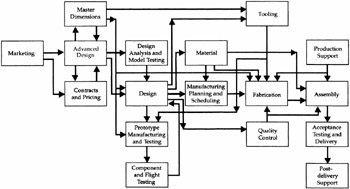Developing Business Operations Profiles
|
All business operations have a flow—they have a beginning, a middle, and an end. Manufacturing begins with raw materials and ends with finished goods in inventory. Data processing begins with raw information and ends with reports. There are costs at both ends; in between, there is nothing but costs.
Consultative sales representatives should be able to chart the flow of the critical customer business operations they affect. They should be able to assign appropriate costs to the most critical success factors in each process—the 20 percent that contribute the 80 percent—and be able to prescribe the optimal remedy to reduce their contribution to costs or expand their contribution to revenues.
Some of these remedies will be therapeutic; that is, they will lower an existing cost. Other remedies will be curative; they will alter a process, combine it with another, or eliminate it from the flow. In still other cases, the remedy will be to change the architecture of a process so that a completely new set of cost or revenue centers will result.
In most customer operations, work flow is cost-ineffective. It incurs unnecessary cost or it processes work ineffectively. If you can optimize it, you can improve its contribution to profits. Every dollar of cost you take out can drop to the customer's bottom line. Every improvement you make in productivity can also lower the operating cost and raise the output from each dollar invested in labor, energy, and materials.
There are two ways to scope a customer business line or business function. One is to scope its funding to determine where it ranks in its company's flow of investment funds. A second way is to scope its process flow to determine its critical success factors.
-
Scoping funding. Nothing happens in business until funds flow. Once funds are allocated, they can be drawn down at the Box Two level and put to work, that is, invested. If consultative sellers want work, they must go where the funds are flowing, which will always be to a customer's cost center and profit center managers whose success is critical to corporate strategy.
"Go where funds flow" prevents your coming up dry by being told, "We have no money," and having proposals turned back that are in effect stamped "insufficient funds."
-
Scoping process. When funds flow to a profit-centered line of business or cost center, work can flow through it. You must know how this takes place. You must be able to identify the critical success factors in all customer functions that you affect, you must know their current contributions to function costs or revenues, and you must know if you can add value to them and at what rate of return for a customer's investment.
Figure 7-1 shows the critical functions that determine the success of a supermarket chain's business. Where are costs higher than necessary: Is inventory stocking or order assembly inefficient? Where are revenue opportunities remaining undercapitalized: Can backhaul trucking be made to contribute, or contribute more, to profits?

Figure 7-1: Supermarket chain work flow.
The work flow for an aerospace manufacturer is shown in Figure 7-2. This process begins with the marketing function. How can it turn over more projects faster? Are design analysis and testing roadblocks to turning over the process as a whole? Is time wasted, and therefore money, in moving along the projects that marketing brings in? What if model testing could be accomplished one month faster? One week faster? What value would that add to delivery, the time when an aerospace manufacturer is paid in full? In other words, what would the added value be of reducing the cycle time of receivables collection by one month for each project?

Figure 7-2: Aerospace manufacturing work flow.
All PIPs prescribe a solution for work flow problems or cycle time problems or sometimes for both. A PIP can propose to reduce the number of work stations in a process or re-engineer the way they operate or how they are organized. Other PIPs can propose to reduce the time required for a workstation to complete its operating cycle, speeding up work flow but leaving essentially unchanged the way the process is engineered.
Whenever you PIP customers' cycle time, such as getting a new product to market faster or shipping more orders the same day or turning over collections quicker, you are affecting the time value of money in addition to its volume. All of these improvements bring in money faster. In some cases, they may bring in more money than if the customers were to come late to a market or lose one of their key customers to a competitor because of the inability to fill an order when it is received.
In other cases, where your customers would have made the same amount of money anyway, you can PIP only its time value. This may occur in the form of a short-term margin advantage or faster interest accrual from putting the money to work sooner.
In a PIP opportunity where time values are of major importance, a "what-if?" would be expressed like this:
"What if we can help you get each new model to market 30 days faster? This can increase your profits by an average $100,000 per model, based on an incremental month's supply of first-mover margins that earn an average 20 percent premium. When you multiply $100,000 by twelve new models per year, the total improved profit comes to $1.2 million. To realize it, you need to invest only $330,000, which is paid back within the first half year."
|
EAN: 2147483647
Pages: 105